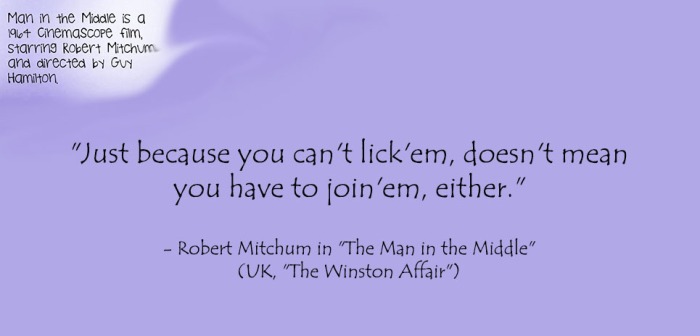A friend today posted a review on Facebook about the film, “Schindler’s List” which he had just seen for the first time, 32-years after the acclaimed movie’s release. My friend talked about the film’s haunting power, its narrative about one man’s brave quest to save a number of Holocaust victims from death.
It’s based on a true story and Schindler holds a special place in Israel for his efforts.
Steven Spielberg said he made the film to honor its hero, Oskar Schindler and remember all the Holocaust victims, those who were saved and the many more who weren’t.
The film — with current headlines about neo-Nazi and white-supremacist in the United States and elsewhere — feels more relevant than ever.
Maybe hatred will never end. Maybe it can’t. Humans love hating more than loving. There have been a few “message” movies that deal with those festering issues. Some say it’s more “fake news” from the liberal media. Like hate, stupidity is eternal.
The other night I revisited the movie “Crossfire” which was released by RKO in 1947, the year before the more acclaimed “Gentlemen’s Agreement” was released. This drew public attention and “surprise” about Antisemitism in post-war America.
“Crossfire” is an excellent, understated film about this virulent subject matter. Its director, Edward Dmytryk (a victim of Sen. Joseph McCarthy’s infamous “Blacklist) used the plot of a small group of GI’s, just mustered out of the war and trying to fit back into society.

They encounter a friendly civilian at a bar who listens to their complaints about readjustment and offers sympathy where others just tune them out. One of the GI’s — lonely for his wife and exhibiting PTSD symptoms — is befriended by the civilian who invites him home for drinks and quiet conversation.
The other soldiers – uninvited — crowd into the apartment and lap up the booze. One of them, a very obnoxious vet — sneers at men who avoided combat, who got rich running banks and law practices. He looks at one of his confused pals and yells: “Jews, man! You know those people! They get rich while we fight and die. Jews!”
The civilian referred to as “Sammy,” is tolerant. Veteran actor Sam Levene who played many similar roles is perhaps overly patient with the bigoted GI. This is Robert Ryan in one of his most chilling villain roles.
The secondary plot has “Sammy” murdered by one of the GIs. The PTSD soldier is fingered as the suspect but we know better. Robert Young, in a pre “Father Knows Best” role, plays the tough, weary cop who sifts through all the alibis. This is one of Robert Mitchum’s early films. He is excellent as the soft-spoken, no-nonsense veteran who is suspicious of the venomous Ryan character.
Ryan is ultimately outed as he rants about “those people.” He gets what he deserves and is gunned down during a police chase on a rainy New Orleans Street.
The final scene with Young and Mitchum in conversation about Ryan’s demons ends quietly as they go their separate ways, both wondering what World War II was really all about.
In an early 1970s interview, Robert Mitchum remembered “Crossfire.” He was in Boston shooting “The Friends Of Eddie Coyle,” so I had the good fortune to spend a long afternoon into the evening over drinks with “Mitch.” In a wide-ranging conversation, Mitchum recalled what it was like working in the 1940s, especially with “The Blacklist” hovering over Hollywood. He said some pals urged him not to do “Crossfire” because it would hurt his career.
“Mitch” grinned at me “You know what that was all about, Don’t ya?” I nodded. Mitchum continued, “There were so many hateful bastards — there were always dissing Negroes (he looked at me and I nodded an ‘okay’) and Jews. They always thought I was with them. I had a few fights and dumped a few jobs because I couldn’t stand the two-faced bastards.”
I looked at Mitch and confirmed: “Not much has changed.” He shook his head sadly and ordered another round. That was almost 50 years ago. Not much has changed. Not on the silver screen or in reality.

Categories: film, Film Review, Garry Armstrong, Hatred and bigotry, History, Politics







 INTOLERANCE: REEL AND REAL By GARRY ARMSTRONG
INTOLERANCE: REEL AND REAL By GARRY ARMSTRONG  INTOLERANCE: REEL AND REAL – Garry Armstrong
INTOLERANCE: REEL AND REAL – Garry Armstrong
Sadly, this is so true!
Nothing has changed, which to me is very sad!
LikeLiked by 2 people
I often wonder if, as a species, we are capable of change for a species that seems far more dedicated to killing and war than love or peace. Pop songs notwithstanding, love does not conquer all. Hell, the first person the cops look at when looking for a murderer is the person’s mate. We do not seem to be able to distinguish one powerful emotion from another. How many times do you hear on one of those cop shows the line: “I didn’t have a choice.”
OF COURSE they had a choice. Everyone has a choice. That we can’t even see the choice is part of our human darkness.
LikeLiked by 1 person
Carol anne, Marilyn and I were just discussing the hate subject today while looking over our current political state of affairs, Sadly, nothing has changed. More depressing, the future doesn’t look brighter. One thing: People really need to read history. Understand history before they plunge into the sound and fury.
LikeLike